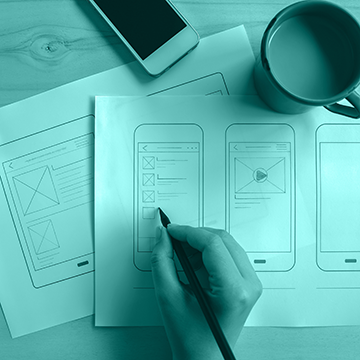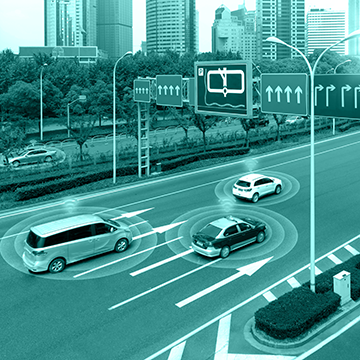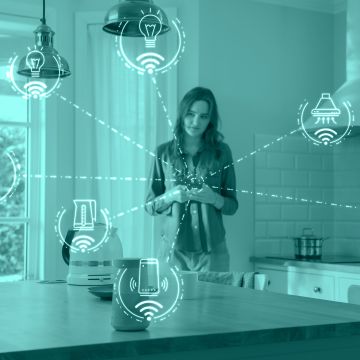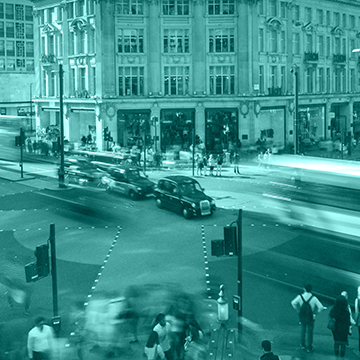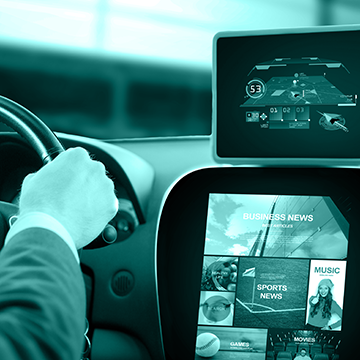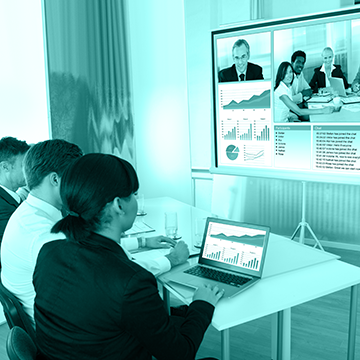Virtual Reality and Augmented Reality
Virtual reality and augmented reality are the future of how we communicate and experience the world
Our expertise
Virtual reality and augmented reality consulting ensures that there is an efficient mobile ecosystem where the industry can thrive. IoT, wholesale, BSS/ OSS, convergence, and more are all vital to their functioning. They are also some of our key areas of expertise. We leverage our superior knowledge to build innovative strategies for reality technologies. VR, AR, and mixed reality (MR) are all hyper-relevant and deployable in any business. Be it and insurer that can include headsets in their offering, a manufacturer that is looking to expand its production capabilities or an MVNO looking to differentiate itself from the competition.
At RDC we can support you with:
-
VR/ AR strategy
-
Market intelligence on VR/ AR
-
VR/ AR M&A
-
Implementation of VR/ AR into your services
Virtual reality vs augmented reality
Virtual reality creates an immersive experience
VR takes place in a fully computer-generated environment, with 3-D rendered images. This makes users feel they are part of their new surroundings. Currently, standard VR systems use headsets or purpose-built rooms with multiple large screens. Both create realistic images, sounds and sensations that simulate physical presence in a virtual environment. Applications of virtual reality include entertainment (particularly video games), education (e.g., medical, or military training) and business (e.g., virtual meetings).
Augmented reality builds on the world around us
AR is an enhanced version of the physical world achieved by overlaying visual, auditory, or other sensory information onto the real world. Glasses, tablets, phones, heads up display and more contribute to the augmented reality device ecosystem. Applications include entertainment, gaming, and education. For example, in the mobile game Pokémon Go, users search in their real-life neighborhoods for animated characters that pop up on their phone. In entertainment, NFL broadcasters use AR technology to analyse the game.
Some key differences between VR and AR
Augmented reality and virtual reality are often confused. There are some important differences:
-
Devices: VR uses devices that create full immersion including headsets, headphones, wall to wall screens, and motion sensors. AR is less prescriptive, capable of using VR devices but also including things like mobile phones, smart glass, heads up displays (HUDs) in cars, and televisions etc.
-
User experience: VR experiences are immersive, bringing the user into a brand-new world. AR experiences add to the existing world around us.
-
Ease of integration: Virtual reality and augmented reality have very similar use cases. Both have education and training, entertainment, and business uses. The difference lies in implementation. VR requires greater investment into infrastructure, whereas AR requires as little as a smartphone
The joint evolution of VR and AR
Coining the terms
The term “Virtual Reality” arose in 1987 by Jaron Lanier. His company, VPL Research, went on to develop some of the first affordable VR devices. Three years later, in 1990, Boeing Computer Services Research employee Thomas Caudell used ‘augmented reality’ to describe the head-mounted displays electricians use to assemble complicated wiring harnesses.
The pioneer
Simulated environments existed since the early 1960s with the Sensorama by Morton Heilig. This is a mechanical device including a stereoscopic colour display, fans, scent emitters, stereo‐sound system, and a motional chair.
First uses
Between 1970 and 1990, VR devices proliferated in medical training, flight simulation, automobile industry design, and military training. In the 1990s VR became more tangible through commercial releases of consumer headsets.
In 1998, the mainstream adopted augmented reality. NFL broadcast games began using Sportsvisio with a yellow line overlayed on top of the feed so that viewers could see where the team had to advance to get a first down.
Starting to grow
In the 2010s, interest in VR exploded. This is in large part due to the boom in the tech industry and specifically venture capital within it. In 2010, Palmer Luckey designed the first prototype of the Oculus Rift and in 2014 Facebook purchased Oculus VR for USD3bn.
Commercialisation
Now, there are more than 300 companies developing VR-related products. Amazon, Apple, Facebook, Google, Microsoft, Sony, and Samsung all have dedicated AR and VR groups.
Today, Google Glasses, smartphone games and HUDs are well-known consumer AR products. Industries across the world use both technologies.
VR and AR are making big impacts in the world
Today’s virtual reality
Medicine, culture, education, and architecture have already taken advantage of this technology. From guided museum visits to the dissection of a muscle, VR applications are endless. However, there are still obstacles to be overcome.
-
Researchers report VR helping people with Parkinson’s disease improve balance and decrease falls. In response to 6 weeks of VR training, patients with Parkinson’s increased their over-ground gait speed and stride length. They had increased endurance and more easily navigated around obstacles. Walking while performing another task also improved. This effect was not seen in previous studies of treadmill training, lending support to the idea that VR has unique benefits
-
In 2021, the US Army penned a 10-year agreement with Microsoft to provide 120,000 headsets based on the HoloLens line. Issues have arisen however, with soldiers wearing the goggles during field tests. They report suffering “mission-affecting physical impairments” including headaches, eyestrain, and nausea. In response, software improvements can reduce effects, make headsets more reliable and reduce power consumption
-
Architects use VR tools together with traditional architectural software. VR allows both architects and clients to better understand the spatial qualities of a project and how design choices will impact the feel of a building.
Some use cases
Augmented Reality is still a very new technology, which means there is still a lot of room for growth and new business use cases. There are already many applications of AR all around us:
-
The Apple Measure app acts like a tape measure by allowing users to measure the distance between two points in the real world
-
Social media filters. Instagram, TikTok and SnapChat all use AR to overlay filter or special effect over the user’s face or background
-
U.S. Army. The U.S. Army uses AR in an eyepiece called Tactical Augmented Reality (TAR). TAR mounts onto the soldier’s helmet and aids in locating another soldier’s position
-
Google SkyMap overlays information about constellations, planets and more through users’ smartphone cameras
-
Wikitude app that looks up information about a landmark or object from a smartphone’s camera
-
IKEA Place app provide an overlay of furniture in the user’s home before they even set foot in the store
-
The U.S. Army uses AR tools to create digitally enhanced training missions for soldiers. It’s become such a prevalent concept that the army’s given one program an official name, Synthetic Training Environment, or STE.
Some trends to watch
The VR and AR market is calling for affordable applications that go beyond leisure, tourism and marketing. Virtual interfaces need to improve to avoid defects such as clipping (where it looks like you can pass through solid objects). Improvements need to minimise side effects, like motion sickness.
Retail is transforming for both business and customer
VR employee training
VR technology allows staff to immerse themselves in an environment where they need to manage long queues or shoppers crowding the store. This eliminates disruption to business for team training.
Walmart used this technique to prepare their employees for Black Friday shoppers. The company partnered with VR creator Stivr, which also helps train NFL players through VR technology. Walmart subjected its employees to a simulation of real-world scenarios. Employees were then asked to make choices based on what they saw in the computer-generated environment.
Enhanced customer experience with AR shopping tools
AR shopping tools have already been successfully adopted by furniture manufacturers (e.g., Target, and Wayfair), beauty retailers (e.g., Sephora), sportswear brands (e.g., Nike), and online eyeglasses retailers (e.g., Warby Parker). Adoption will not slow down as brands look to improve the online customer experience.
Through these “Try before you buy” solutions, potential customers can try things without leaving their homes, whether that is a new shelf, a shade of lipstick or sunglasses.
Cheaper VR Headsets and Devices
The cost of VR is the main challenge that consumers face. When Oculus Rift first entered the market in 2017, it was at $599, and buyers still needed to find a compatible PC that could meet its hardware requirements, which cost about $1,200.
Virtual and augmented reality technologies will also become more affordable with time and continued investment. We can already see this as companies continue to manufacture, sponsor, or brand headsets and related devices and content.
Today, Oculus and other companies are introducing new models at much lower costs. The lower prices of these VR models are, in turn, sparking consumer interest. An example of this is the Oculus Go. First launched in 2017, it costs $199 and maintains the user’s ability to have a full VR experience.
Maintenance and repair
Expert technicians can remotely maintain and repair problems using AR systems. The expert can give step-by-step instructions to anyone with an AR headset, circling important objects and walking them through the process. Augmented reality systems can also display helpful information about equipment, including operation times, date of last service, potential points of failure and more.
This data can inform preventive and predictive maintenance efforts. It also allows operators to identify and fix issues faster, reducing downtime and associated costs.
VR and AR are changing the way we interact
Above all, virtual reality and augmented reality are changing the way we interact with technology and the world around us. In a fully immersive experience, users can feel physically present. There are endless applications, including gaming, education, training, therapy, and more. At any rate, VR has the potential to revolutionise industries like healthcare, entertainment, and education by providing more engaging user experiences. Additionally, VR and AR have huge potential for use in remote communication, enabling people to interact with each other in a more natural way, wherever they are in the world.
Get In touch
If you have a requirement you would like to tell us about request a call back below


